Spain's bear population is growing, thanks to crucial conservation work.
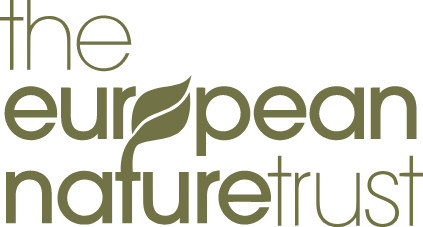
National and international criticism is growing at Switzerland’s wolf cull which started on the 1st December and which promises to be the most extreme ever implemented in Europe since the recovery of the species. Over 360 environmental and animal protection organisations including the IUCN SSC Canid Specialist Group — the global leading expert on wolves and their wild relatives, and The European Nature Trust — have so far expressed their deep concern and condemnation in an open letter to the Swiss government.
As of 5 January, 32 wolves have so far been culled under the new legislation: 22 wolves in the Valais; 8 in the Grisons; 1 in St Gallen and 1 in Ticino. It is worth remembering that the two-month cull, which began on 1 December, targets a total of 12 packs and up to 2/3 of the young in other packs, thereby reducing the Swiss wolf population by as much as 70% –below the estimate given for a minimum viable population of 20 packs in Switzerland, as IUCN scientists have determined, with the aim of further culls to maintain a low level.
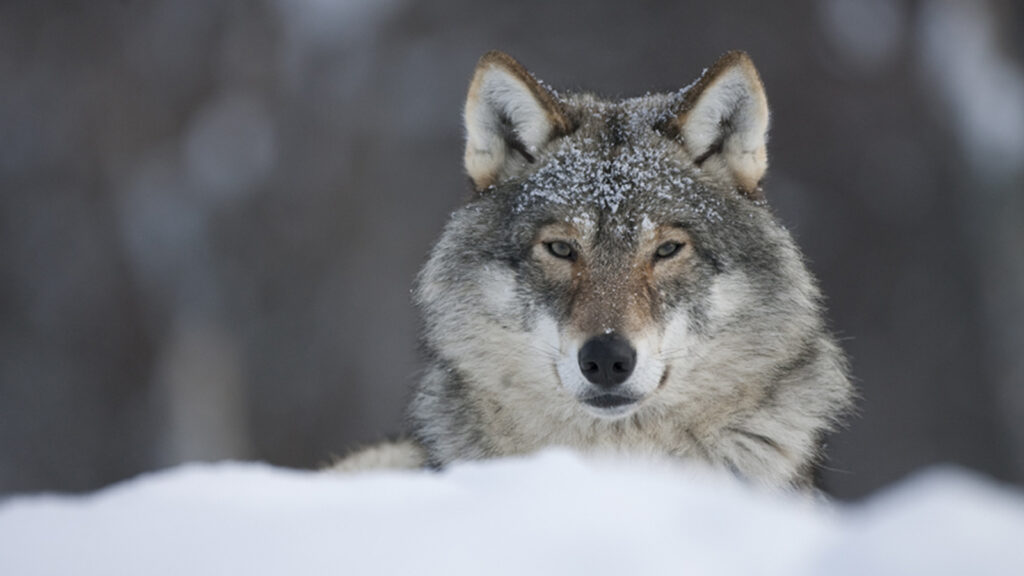
The Swiss cull is set in an era of uncertainty for wolves in Europe. On 20th December, the European Commission announced intentions to downgrade the protection status of the wolf under the international Bern Convention on the Conservation of European Wildlife and Natural Habitats, from an Annex IV species to an Annex V. Downgrading the species would open the door for EU range states to initiate politically-motivated culls under pressure from powerful agricultural and hunting lobbies, rather than reactively killing ‘problem wolves’. Although wolves under Annex V still need to have Favourable Conservation Status (FCS), as under Annex IV, the contentiousness of what constitutes FCS would leave ample room for Member States to set it at the lowest possible population size for political reasons. This is already the case in Sweden, where the government instructed its Environmental Protection Agency to set FCS to between 170 and 270 wolves.
The wolf is a protected species, native to Switzerland and listed as Vulnerable on the country’s Red List and as a “strictly protected fauna species” under the Bern Convention, which Switzerland has ratified. Yet national wolf protection legislation has been undermined to such an extent that a legal framework now exists for cantons to kill entire packs down to a set quota on a preventative basis, regardless of whether or not they have caused serious damage to livestock or threatened humans. With the EU’s recent announcement of downgrading the species to Annex IV, that picture is very likely to play out across other EU Member States without legal and activist intervention.
Threats to human safety were cited by President Ursula von der Leyen in the European Commission’s October announcement, which invited EU Member States to submit data on wolf populations within just 18 days. The killing of a family pony of Ursula von der Leyen by a wolf in 2022 is known to have caused considerable upset to the EU President, while the extreme brevity of the consultation period and the disregard for public opinion have led to accusations of unconstitutional behaviour.
The truth is that humans are far more likely to be injured by cows in Switzerland than they are to ever be attacked by a wolf; “Although wolves can attack humans, no fatal wolf attacks on people have been recorded in Europe in the last 40 years,” reads the European Commission’s own, December 2023 investigative report on the subject.
The recovery of wolves in Europe has been a rare conservation success story. Instrumental has been the strict legal protection of wolves throughout most their range. The combination of land abandonment, improvement of attitudes, and reduced human impacts on the landscape over the last decades of the 20th century has created the conditions for wolf recovery across Europe. Having been extirpated from most of Europe during the 18th and 19th Centuries, wolves started to recover in the 1970s and are now present in most of the EU Member States. About 20,000 wolves have been estimated in 2023 across the EU.
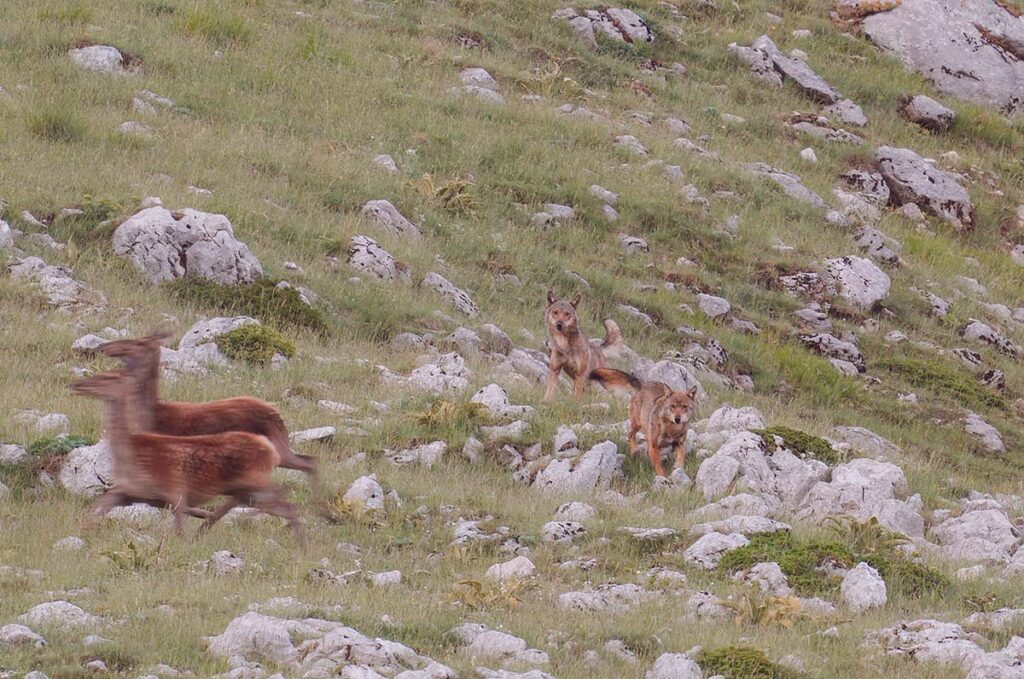
The wolf plays an important role in the ecosystem. Wolves manage the health and population levels of wild ungulates, reducing browsing which can significantly degrade forest ecosystems. In protecting young trees, and particularly widespread natural regeneration, wolf help build mitigation capacity against climate change. By the same token they can also lessen damage to agricultural crops and forestry, as well as the incidence of diseases (e.g., tuberculosis, African swine fever) transmitted by wild ungulates to livestock.
With the return of the wolf, conflict has reawakened; in many Member States with wolves, such as Italy and Spain, the wolf debate has been leapt upon by politically motivated attempts to waiver environmental protections to win rural voters. In truth, conflicts arise with livestock breeders mainly in areas where the wolf has been absent for decades. In such areas – Northern Spain, Central Italy, Switzerland and South East France – the husbandry methods had adapted to a landscape devoid of large carnivores, leading to a decline in practices for managing and protecting grazing livestock in the presence of large predators.
With 60 million sheep across Europe, wolves kill just 0.065% annually. Moreover, deterrents such as electric fences and guardian dogs are proving effective across the EU; wolf predation in Switzerland was down 29% this year compared to the same time last year, despite an increase in wolf number. In many regions, wolf predation now primarily occurs in areas with minimal to no preventive measures (one study in Trento found 81% of wolf livestock predation occurred where there were no preventive measures in place), while in Switzerland the government’s own appointed monitoring organisation, FORA, found that 90% of kills involved unprotected livestock.
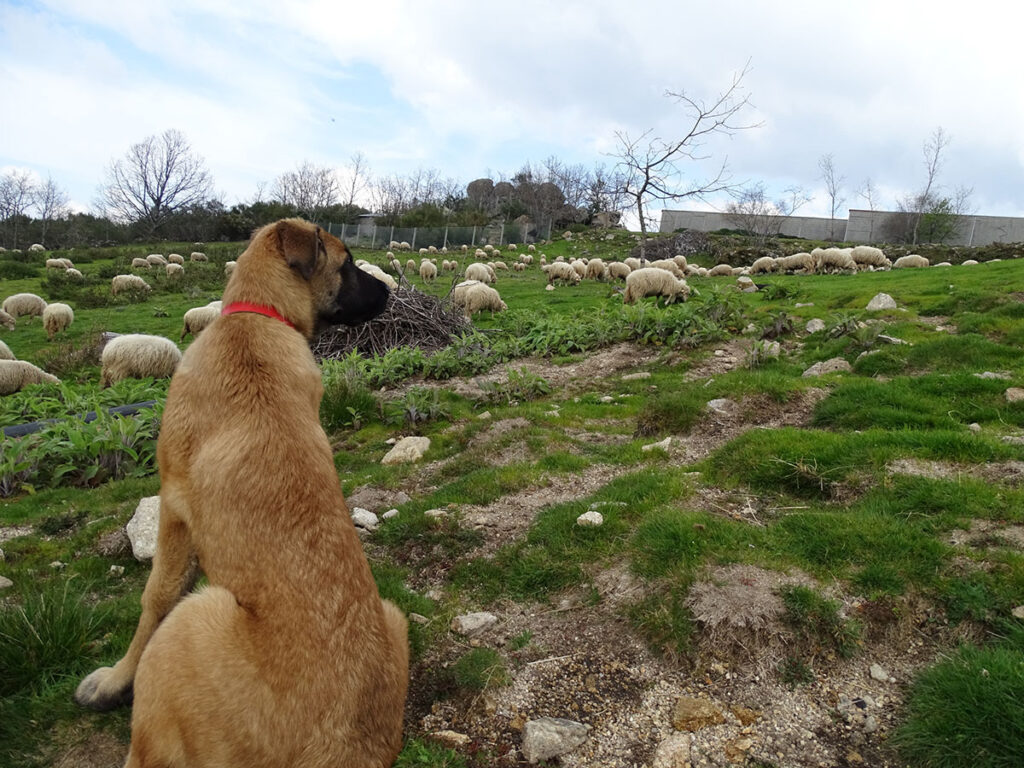
Public opinion has been ignored with the European Commission’s recent announcement. Over 70% of the respondents to the call for population data expressed their support for maintaining wolf protection status, compared to 29% in favour of reducing its protection status. According to a survey conducted by Europgroup for Animals, 68% of rural inhabitants in 10 EU Member States say wolves and other large carnivores should be strictly protected and 72% believe they have a right to co-exist. Another more recent survey of residents in rural communities conducted by Savanta on behalf the same organisation in 10 EU countries reported “a significant 68% of those surveyed advocating to maintain the strict protection status of large carnivores”. Even in Switzerland – where up to 70% of the wolf population is currently being culled – 79% of people do not want wolves that attack unprotected flocks to be shot, according to a 2019 survey by ProNatura.
12 packs will nevertheless be exterminated in the cantons of Grisons, St Gallen, Valais and Vaud, while juvenile wolves will be targeted in the Ticino. The Valais has applied to shoot 34 wolves from 7 packs (Nanz, Augstbord, Hérens-Mandelon, Le Fou-Isérables, Les Toules, Les Hauts-Forst, Le Chablais), some of them transboundary. Hunting aids such as camera traps, light amplifiers and infrared devices, prohibited under the Valais’ hunting law, will be permitted on “an exceptional basis”. The Grisons’ sights have been turned on 4 of its 12 packs, while St Gallen with cull the Calfeisental pack. The total tally is unlikely to be reached by the end of January when the two-month-long cull ends, but the first night of the cull claimed the life of a young wolf from the Augstbord pack.
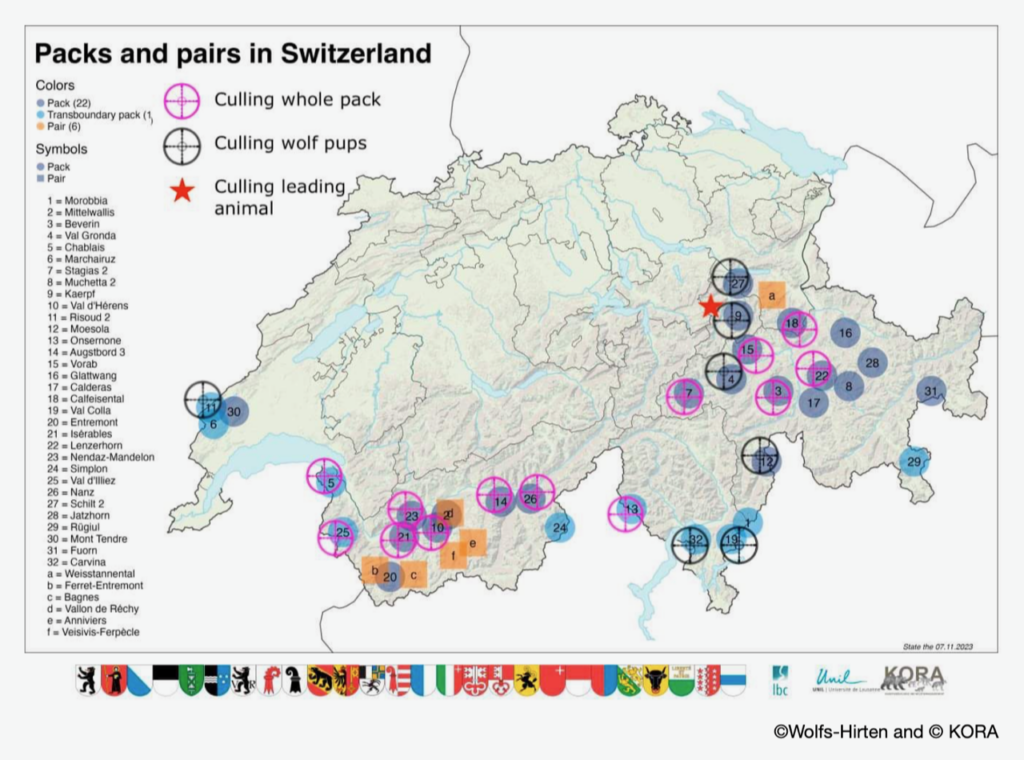
Map showing planned wolf culls in Switzerland before January 31st, 2024.
There is limited evidence to suggest that culling is even effective at reducing livestock predation. Culling can actually increase livestock predation by disrupting naturally-functioning wolf societies, removing key individuals that transmit hunting knowledge to next generations, increasing wolf reliance on domesticated prey. Legalising and condoning the killing of protected species has also been shown to increase the risk of poaching. Already, in regions where wolves are legally protected, illegal killings are frequent. One study across Emilia-Romagna and Tuscany in Italy found that, of 212 wolf carcasses recovered between 2005 and 2021, 84.4% died because of humans: 45 died from poisoning with toxic substances, 24 from gunshot wounds, 4 struck by blunt objects, and 2 hanged. Just 10% died of natural causes.
We are currently experiencing a mass species extinction making it all the more important to implement conservation and management measures that are both coordinated and consistent. The wolf contributes to a richer animal and plant life and its return to Europe is a rare success story. In Switzerland specifically, it is a country with some of the highest percentages of threatened species in the OECD and by culling wolves, the nation is effectively delegating its responsibilities to conserve wolves and biodiversity to its neighbours.
Wolf presence in Europe isn’t just a matter of ecological importance, it is testament to our values of cohabitation and tolerance.
Spain's bear population is growing, thanks to crucial conservation work.
Through the FIRNS initiative, TENT is working on a new blueprint for investment into nature recovery.
An amazing attendance at the RGS to celebrate Belizean conservation!

